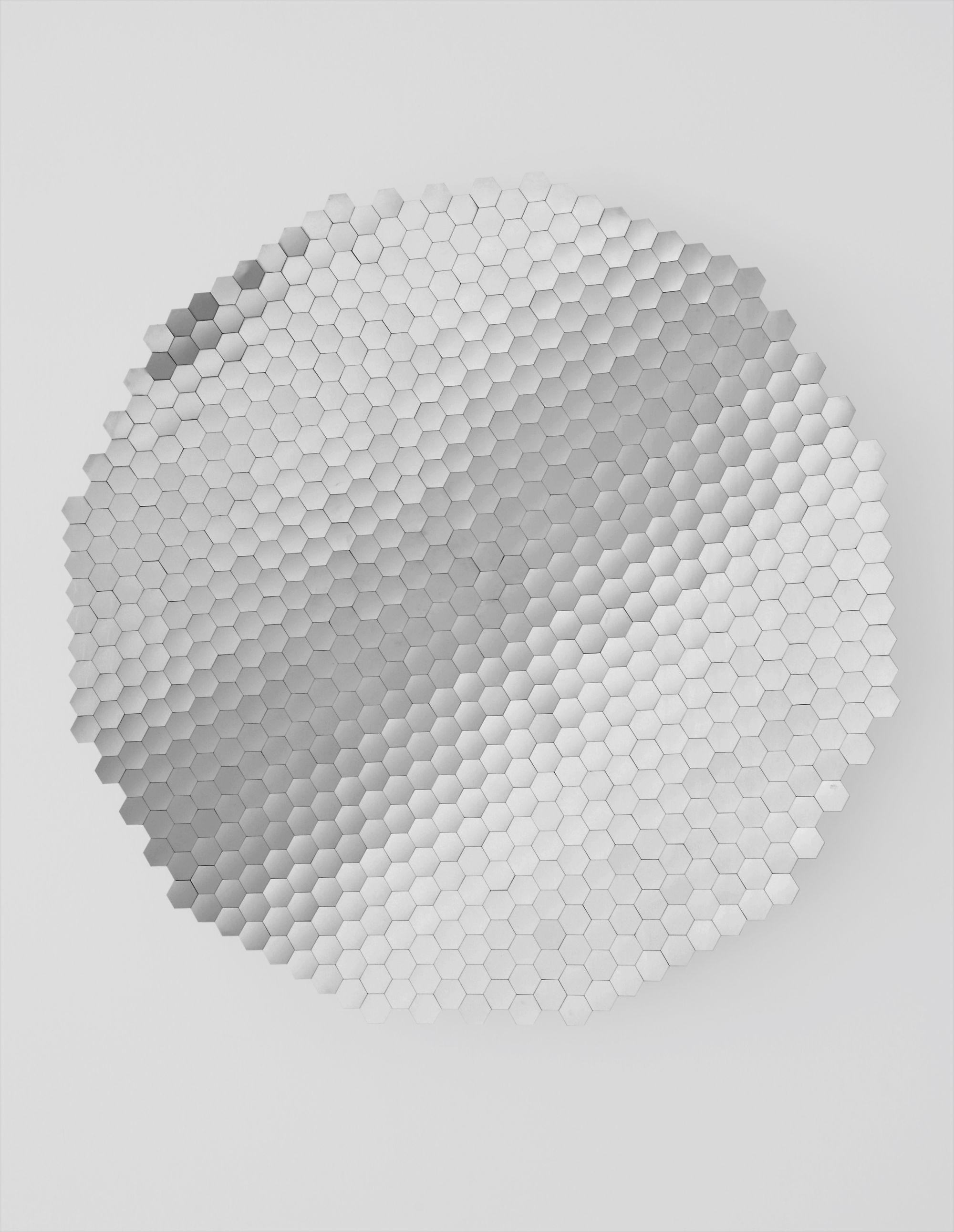

12
Anish Kapoor
Untitled
stainless steel
120 x 120 x 45.7 cm (47 1/4 x 47 1/4 x 17 7/8 in.)
Full-Cataloguing
‘If at one level the history of sculpture is the history of material, I have found in my practice that material leads me to non-material. That is why I first started making void objects and then mirrored objects and then non-objects.’
- ANISH KAPOOR, 2009
One of the most influential sculptors of his generation, Anish Kapoor creates abstract works that exist outside of material concern. Kapoor’s forms are purely aesthetic, meaning they resist a romanticised view of their own materiality: in his own words, the artist explains that ‘the physical aspect of the object has nothing to do with looking.’ (Anish Kapoor in conversation with Nicholas Baume, Anish Kapoor: Past Present Future, Institute of Contemporary Art Boston, 2008, p. 46). Rather, material in the case of Kapoor is used to create a physical intervention that allows the viewer to explore and experience dynamic spatial interactions. For Kapoor, space is the only truly abstract quality because it has no narrative; it is thus the goal of his mirrored works to deconstruct empirical space and project the viewer into a virtual realm, or, as he refers to it, ‘a new sublime.’
The concave form of works such as the present lot attracts the viewer’s attention through a physical pull. At a distance, the inversion of the material world reflected back to the viewer warps their surrounding reality as well as their own image, implicating them in the aesthetic. These works invite the viewer to explore their perception of their own bodily existence through the way in which their image changes as they move around the space that the object occupies. Through these incursions, Kapoor asks the viewer to consider what is being looked at and what is taking place in the arena of the work. ‘What’s happening is that the space of the object is confusing and one can’t quite figure it out; it’s both a space and an object.’ (Anish Kapoor interviewed by Julia Peyton-Jones and Hans Ulrich Obrist, exh. cat. Anish Kapoor: Turning the World Upside Down, Serpentine Gallery, 2011, p. 57).
There is a strong metaphysical aspect to Kapoor’s work that explores the nature of being, and the notions by which people understand the world. Kapoor’s compound mirrored surfaces disrupt the viewer’s perception of reality, defying their sense of logic and common sense. The scintillating planes of these works are active and fluid, signalling to the viewer that this is not a picture within a frame, but that the image is one of substance that goes beyond its limits into a virtual space. ‘I have worked with concave mirror space for twenty years now because concave mirror space is in front of the picture plane and it is a new kind of space and a new sublime. A modern sublime, a “now” sublime, a “here” sublime.’ (Anish Kapoor in conversation with Donna de Salvo, Anish Kapoor, Phaidon, 2012, p. 403).
Kapoor explains that ‘If the traditional sublime is a deep space, then this is proposing the contemporary sublime is in front of the picture plane, not beyond.’ (Anish Kapoor in conversation with Nicholas Baume, Anish Kapoor: Past Present Future, Institute of Contemporary Art Boston, 2008, p. 52). This new sublime is not an aspect of depth, and cannot be found by looking deeply into the surface of the work, but is ‘about present space’ (ibid.), about exploring that which exists in front of the object; it is in this sense that the space of the work infiltrates the zone of the viewer, absorbing and comprising them in the act of looking. As Nancy Adajania writes, ‘Once inside the event horizon of each work, the viewer is invited to reflect closely on the micro-physics of viewing: this yields up a disturbingly intense self-awareness. Kapoor’s works oblige the viewer to become sensitive to the continuous processes of cognition and imagination, instinct and dream, sensation and inference, by which the mind constructs the world. Indeed in such an act of aesthetic response, the mind has a sudden and uncanny experience of looking at itself.’ (Nancy Adajania, ‘The Mind Viewing Itself’ in Anish Kapoor: Delhi, Mumbai, exh. cat., British Council and Lisson Gallery, 2010).
The idea of ‘objectness’ is very important to Kapoor. In order for one of his pieces to be an object, as opposed to a work of art, all evidence of the artist’s hand in its creation must be removed. ‘I must say I work quite hard to get rid of the hand; I’ve always felt the hand of the artist was overrated.’ (Anish Kapoor in conversation with Nicholas Baume, Anish Kapoor: Past Present Future, Institute of Contemporary Art Boston, 2008, p. 46). By leaving no trace of the artist’s hand, Kapoor makes his mirrored objects manifest in a space where they cease to be physical, becoming a self-made entity generative of independent meaning. While the materiality of the work exists in space, it is able to transcend its own physical existence through the way in which it distorts the perception of the viewer, transporting them to an ephemeral, abstracted plane of hovering self-consciousness.